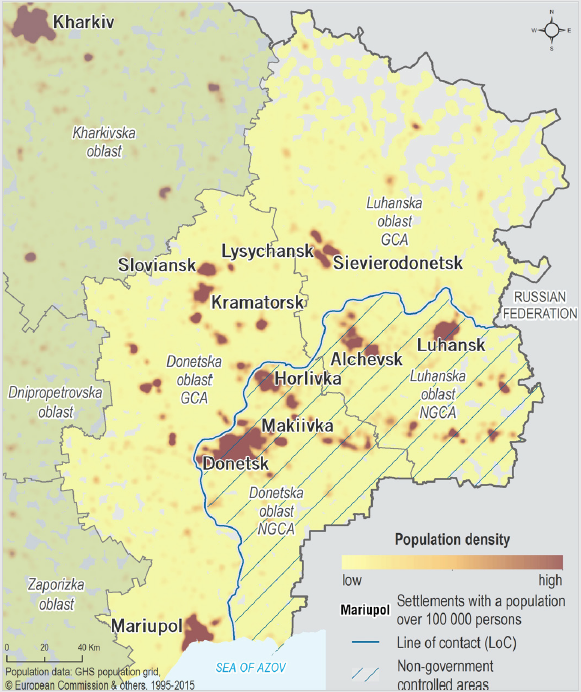In May 2018 JIPS received a request to support a durable solutions profiling of the displacement situation in the Luhansk Oblast. In November, we went on a two-week scoping mission to better understand our partners’ needs and jointly elaborate “the backbone” of the profiling exercise: concrete objectives, coordination mechanism, scope and envisaged methodology.
The profiling request that came through was jointly signed by NRC Ukraine and the Luhansk Regional State Administration. But why a profiling exercise, you might wonder? After all, a lot of data is already available. Read on to dive deeper and listen in to our conversation with Thomas Hill, Head of Programmes at NRC Ukraine to hear his perspective.
The conflict in Eastern Ukraine, which erupted in 2014, continues to divide the country and over the last years has forced many people to move and live in other parts of the country. Immediate humanitarian needs resulting from the direct impact of live conflict activities still persist around the contact line. However, given the protracted situation humanitarian need is expected to progressively give way to the increasing need for durable solutions for the large numbers of persons who remain displaced, beyond the contact line.
In November 2017, the Ministry of Temporary Occupied Territories and IDPs adopted “The Strategy of Integration of Internally Displaced Persons and of Implementation of Durable Solutions on the Internal Displacement for the period up to 2020” (also available in English). An action plan for the implementation of this strategy is currently being developed, and includes identification of key topics on which data should be collected.
As we learned during our mission when mapping out the information landscape, data currently available focuses either on the national level for the purpose of strategic decision-making – e.g. data collected through a national monitoring system managed by IOM or multisector needs assessments conducted by REACH – or stems from efforts of individual organisations to inform their programming through baseline and endline survey in the 5-20km zone in of the conflict line.
However, the following data gaps persist:

During our mission, we participated in various meetings with representatives from different departments of local authorities as well as the NGO community. We also joined two OCHA-led workshops in Kramatorsk and Sievierodonetsk.
This allowed us to jointly set the ground for the collaborative profiling exercise and understand how it can best complement other efforts, in particular the ongoing durable solution policies and initiatives in the country as well as current humanitarian and development responses. But listen in to our conversation with Thomas Hill to hear more about the profiling exercise and the displacement context in Luhansk.
Currently the recruitment of a profiling coordinator is underway and the coordination platform is being established. We are planning to conduct a technical mission to support the next steps of methodology and tool development early in 2019.